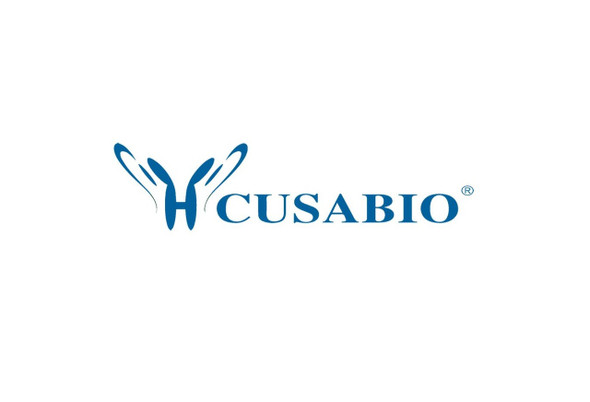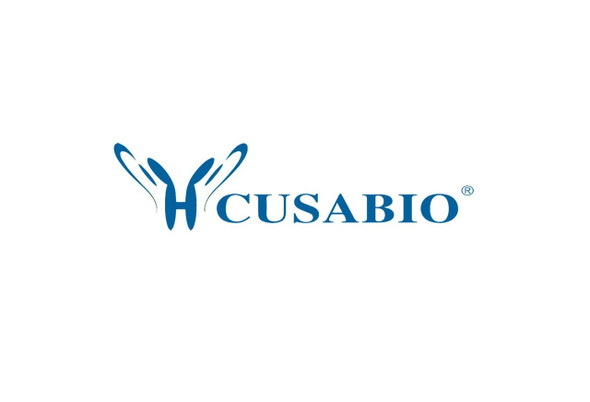Cusabio Human Recombinants
Recombinant Human HLA class I histocompatibility antigen, alpha chain G (HLA-G) | CSB-EP010509HU
- SKU:
- CSB-EP010509HU
- Availability:
- 3 - 7 Working Days
Description
Recombinant Human HLA class I histocompatibility antigen, alpha chain G (HLA-G) | CSB-EP010509HU | Cusabio
Alternative Name(s): HLA G antigen MHC class I antigen G
Gene Names: HLA-G
Research Areas: Immunology
Organism: Homo sapiens (Human)
AA Sequence: GSHSMRYFSAAVSRPGRGEPRFIAMGYVDDTQFVRFDSDSACPRMEPRAPWVEQEGPEYWEEETRNTKAHAQTDRMNLQTLRGYYNQSEASSHTLQWMIGCDLGSDGRLLRGYEQYAYDGKDYLALNEDLRSWTAADTAAQISKRKCEAANVAEQRRAYLEGTCVEWLHRYLENGKEMLQRADPPKTHVTHHPVFDYEATLRCWALGFYPAEIILTWQRDGEDQTQDVELVETRPAGDGTFQKWAAVVVPSGEEQRYTCHVQHEGLPEPLMLRWKQSSLPTIPIMGIVAGLVVLAAVVTGAAVAAVLWRKKSSD
Source: E.coli
Tag Info: N-terminal 6xHis-tagged
Expression Region: 25-338aa
Sequence Info: Full Length of Mature Protein
MW: 39.6 kDa
Purity: Greater than 85% as determined by SDS-PAGE.
Relevance: Involved in the presentation of foreign antigens to the immune system. Plays a role in maternal tolerance of the fetus by mediating protection from the deleterious effects of natural killer cells, cytotoxic T-lymphocytes, macrophages and mononuclear cells.
Reference: "A human major histocompatibility complex class I gene that encodes a protein with a shortened cytoplasmic segment." Geraghty D.E., Koller B.H., Orr H.T. Proc. Natl. Acad. Sci. U.S.A. 84:9145-9149(1987)
Storage: The shelf life is related to many factors, storage state, buffer ingredients, storage temperature and the stability of the protein itself. Generally, the shelf life of liquid form is 6 months at -20?/-80?. The shelf life of lyophilized form is 12 months at -20?/-80?.
Notes: Repeated freezing and thawing is not recommended. Store working aliquots at 4? for up to one week.
Function: Involved in the presentation of foreign antigens to the immune system. Plays a role in maternal tolerance of the fetus by mediating protection from the deleterious effects of natural killer cells, cytotoxic T-lymphocytes, macrophages and mononuclear cells.
Involvement in disease:
Subcellular Location: Isoform 1: Cell membrane, Single-pass type I membrane protein, SUBCELLULAR LOCATION: Isoform 2: Cell membrane, Single-pass type I membrane protein, SUBCELLULAR LOCATION: Isoform 3: Cell membrane, Single-pass type I membrane protein, SUBCELLULAR LOCATION: Isoform 4: Cell membrane, Single-pass type I membrane protein, SUBCELLULAR LOCATION: Isoform 5: Secreted, SUBCELLULAR LOCATION: Isoform 6: Secreted, SUBCELLULAR LOCATION: Isoform 7: Secreted
Protein Families: MHC class I family
Tissue Specificity: Expressed in trophoblasts. Expressed in fetal eye and thymus (PubMed:2336406). Also expressed in adult eye (PubMed:1570318). Isoform 4: Expressed in fetal first trimester trophoblasts (PubMed:7589701). Isoform 7: Expressed in first trimester, second trimester and term placenta, fetal liver, amniotic membrane, skin, cord blood and peripheral blood mononuclear cells (PubMed:11137219).
Paythway: Cellularsenescence
Form: Liquid or Lyophilized powder
Buffer: If the delivery form is liquid, the default storage buffer is Tris/PBS-based buffer, 5%-50% glycerol. If the delivery form is lyophilized powder, the buffer before lyophilization is Tris/PBS-based buffer, 6% Trehalose, pH 8.0.
Reconstitution: We recommend that this vial be briefly centrifuged prior to opening to bring the contents to the bottom. Please reconstitute protein in deionized sterile water to a concentration of 0.1-1.0 mg/mL.We recommend to add 5-50% of glycerol (final concentration) and aliquot for long-term storage at -20?/-80?. Our default final concentration of glycerol is 50%. Customers could use it as reference.
Uniprot ID: P17693
HGNC Database Link: HGNC
UniGene Database Link: UniGene
KEGG Database Link: KEGG
STRING Database Link: STRING
OMIM Database Link: OMIM









